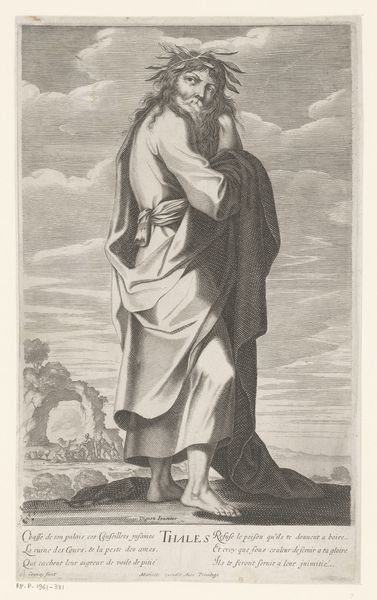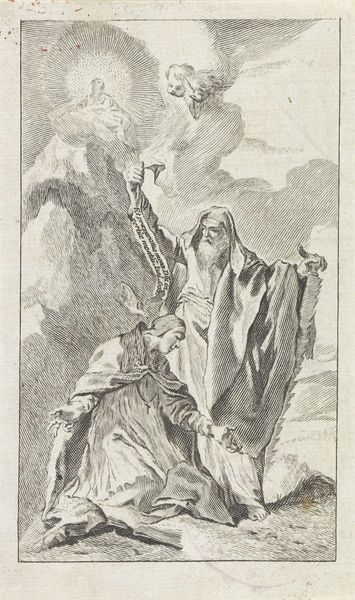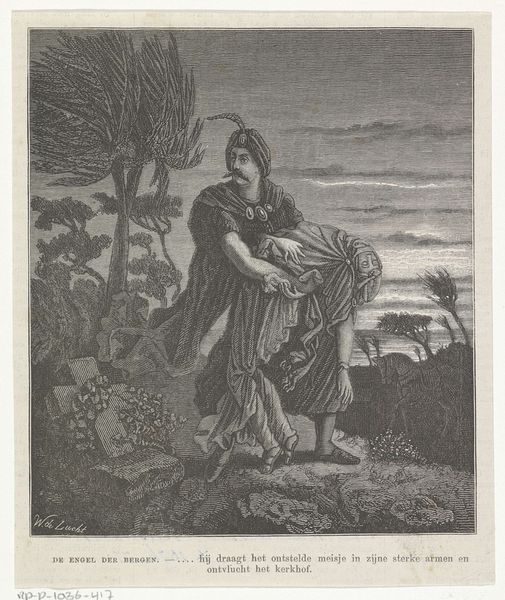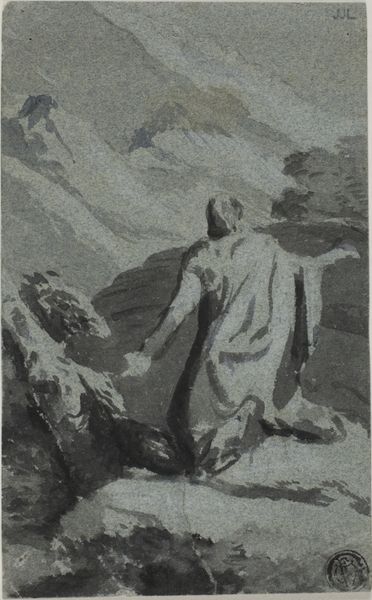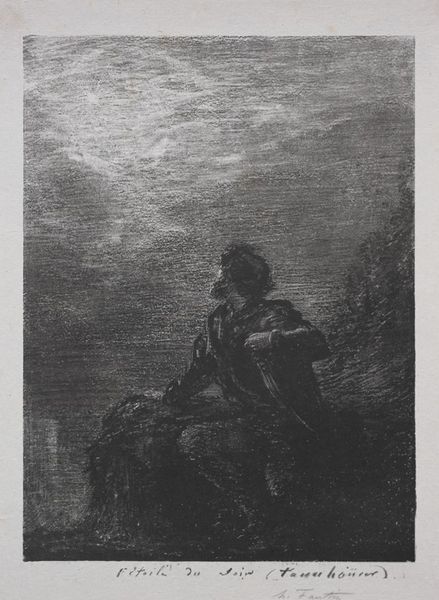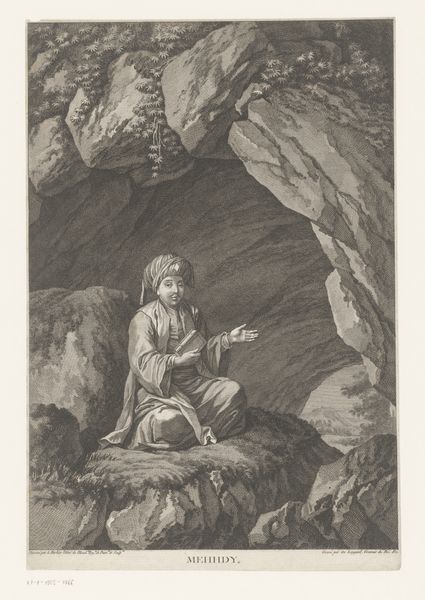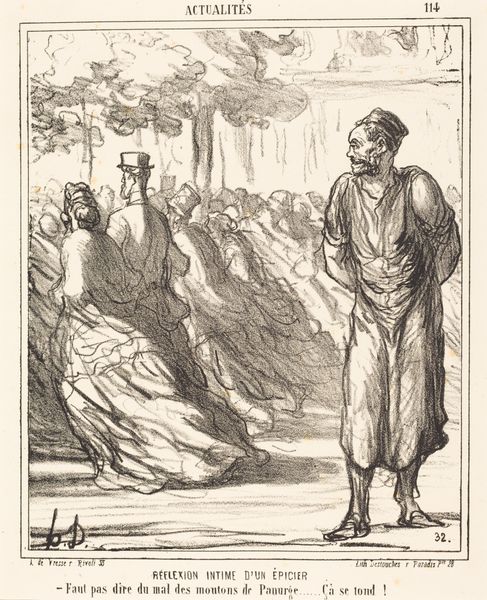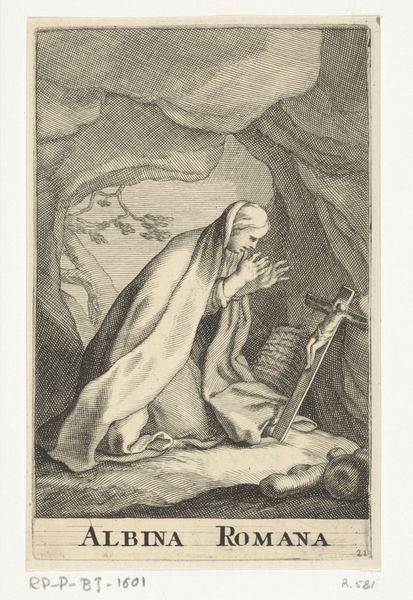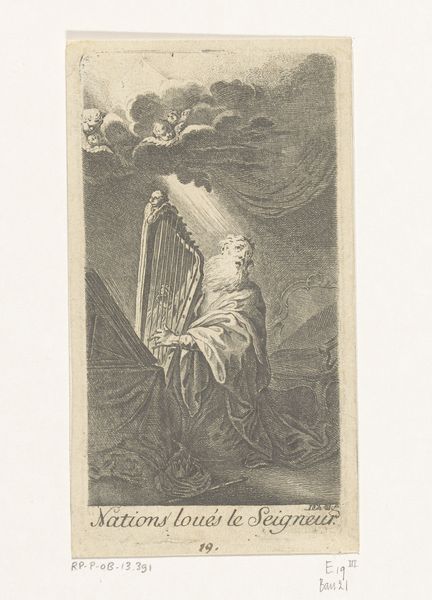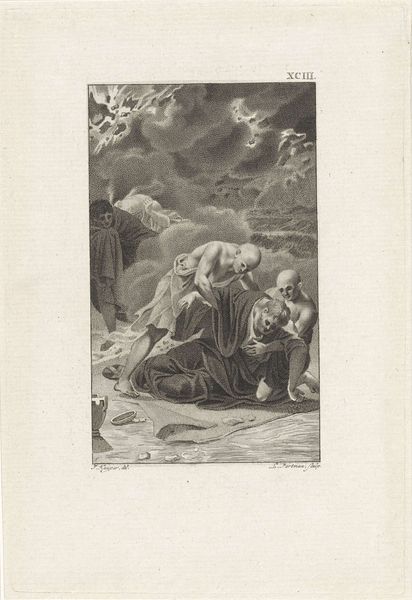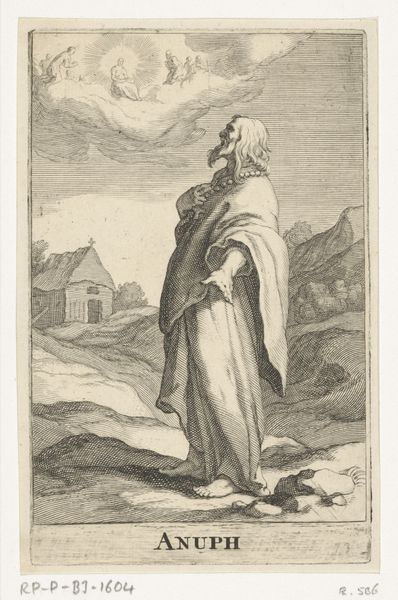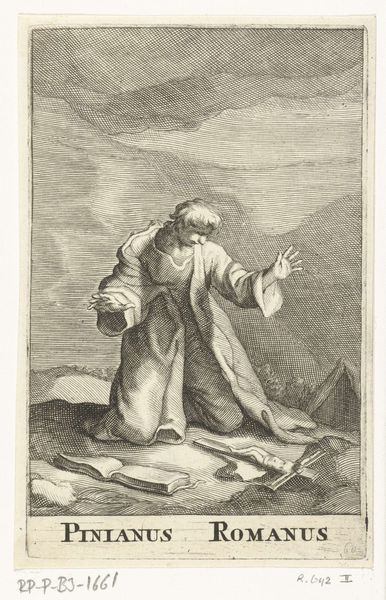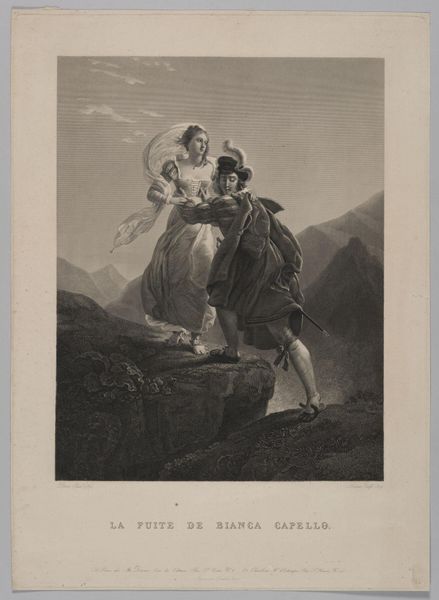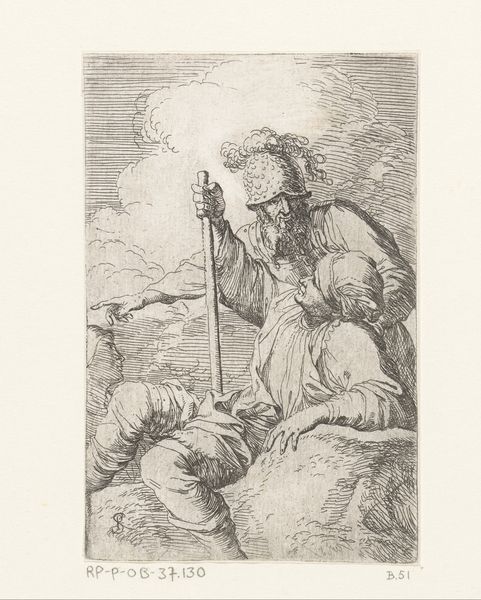
Dimensions: height 136 mm, width 84 mm
Copyright: Rijks Museum: Open Domain
Editor: This engraving, "Nachtgezicht met een soldaat bij een legerkamp," or "Night View with a Soldier at a Military Camp" by Reinier Vinkeles, dates back to 1785. The stark contrast of light and shadow immediately gives it a dramatic, almost theatrical feel. What's your take on this piece? Curator: This print, created during a time of significant political upheaval across Europe, speaks volumes about the anxieties of leadership and the precariousness of power. Consider the solitary soldier, gazing up at the moon – is he seeking guidance, or is he burdened by the isolation of command? What does it mean to depict leadership as a lonely, perhaps even fearful, vigil? Editor: That’s interesting, I hadn’t considered the idea of the soldier's potential fear, as opposed to strength. It makes the whole scene feel much more vulnerable. Curator: Exactly. The Romantic era was grappling with the fallout of Enlightenment ideals and the rise of nationalism. How do you think the vast, dominating night sky and the implied vulnerability of the lone soldier play into this historical context? Think about the soldier, seemingly dwarfed by the immense night, maybe echoing a sentiment about individual powerlessness in the face of larger forces. Editor: So, it’s not just about a literal night scene, but perhaps a commentary on the burdens of responsibility during a turbulent time? Curator: Precisely! By stripping away the idealized image of military might, Vinkeles might be highlighting the psychological toll of leadership, suggesting that true strength lies not in outward displays of power but in acknowledging vulnerability and the heavy weight of duty. Editor: I see it in a completely new light now. It makes me think differently about leadership and the expectations placed upon those in power. Curator: And hopefully prompts you to consider who art includes, who it excludes, and whose stories are being privileged in its narratives!
Comments
No comments
Be the first to comment and join the conversation on the ultimate creative platform.
